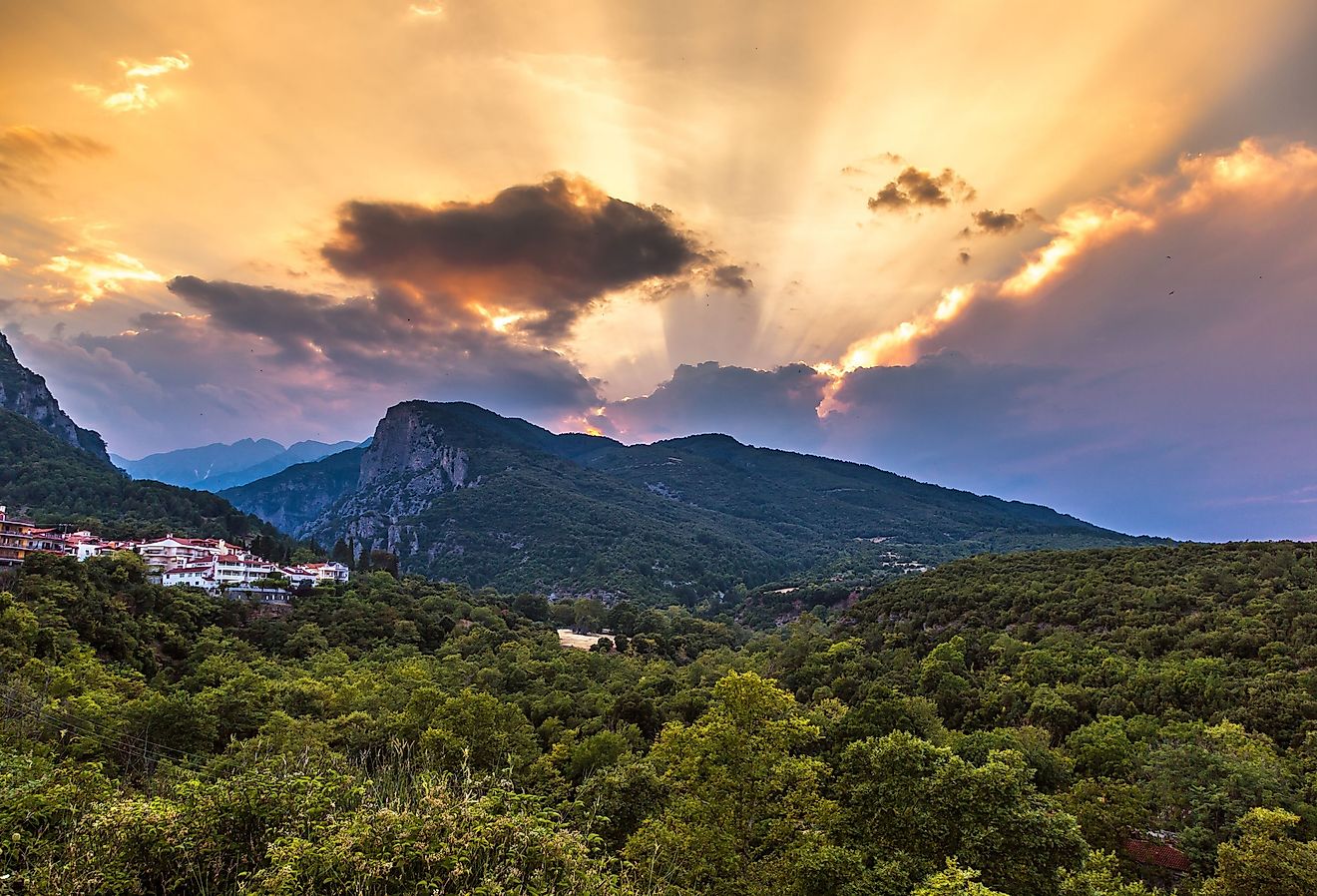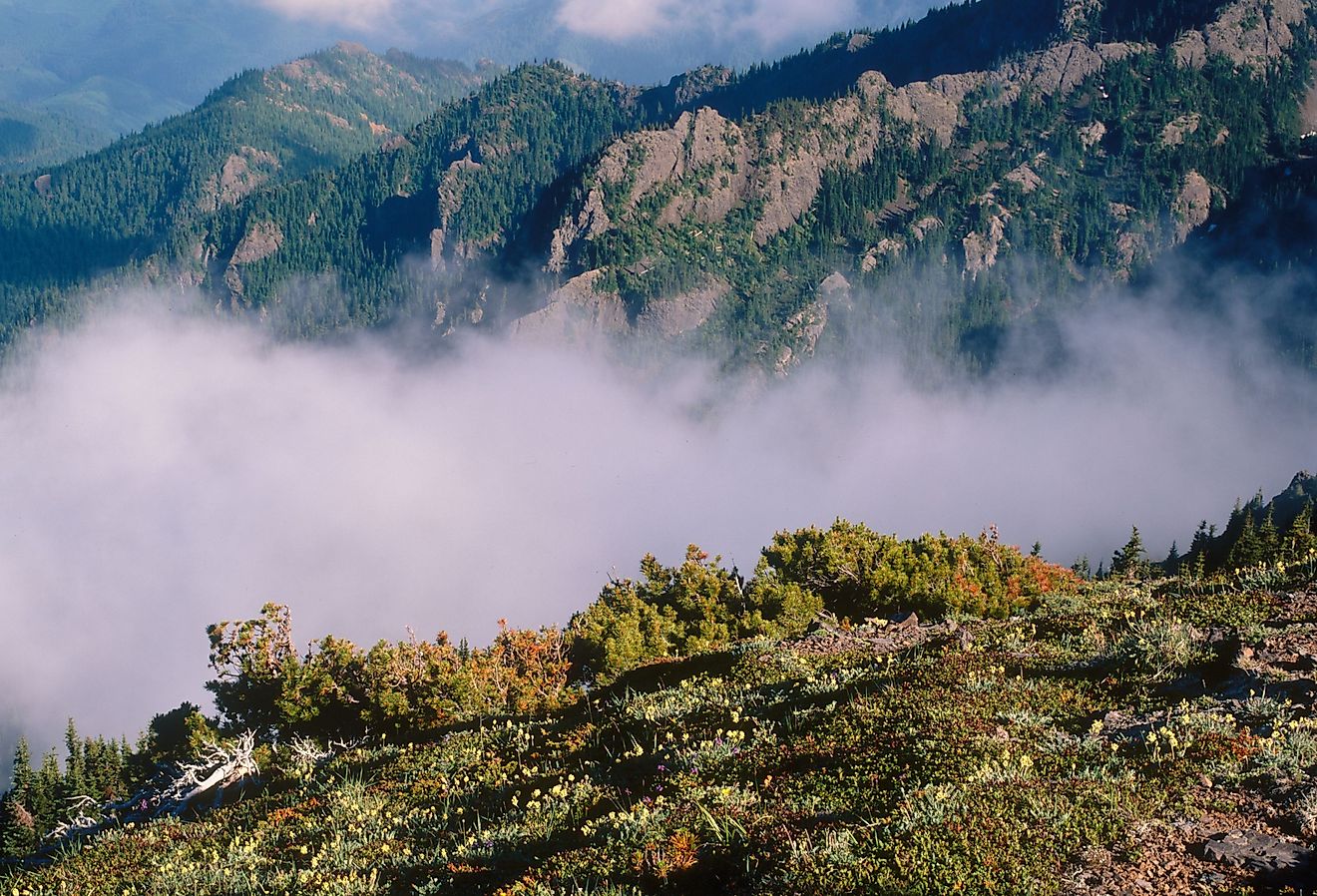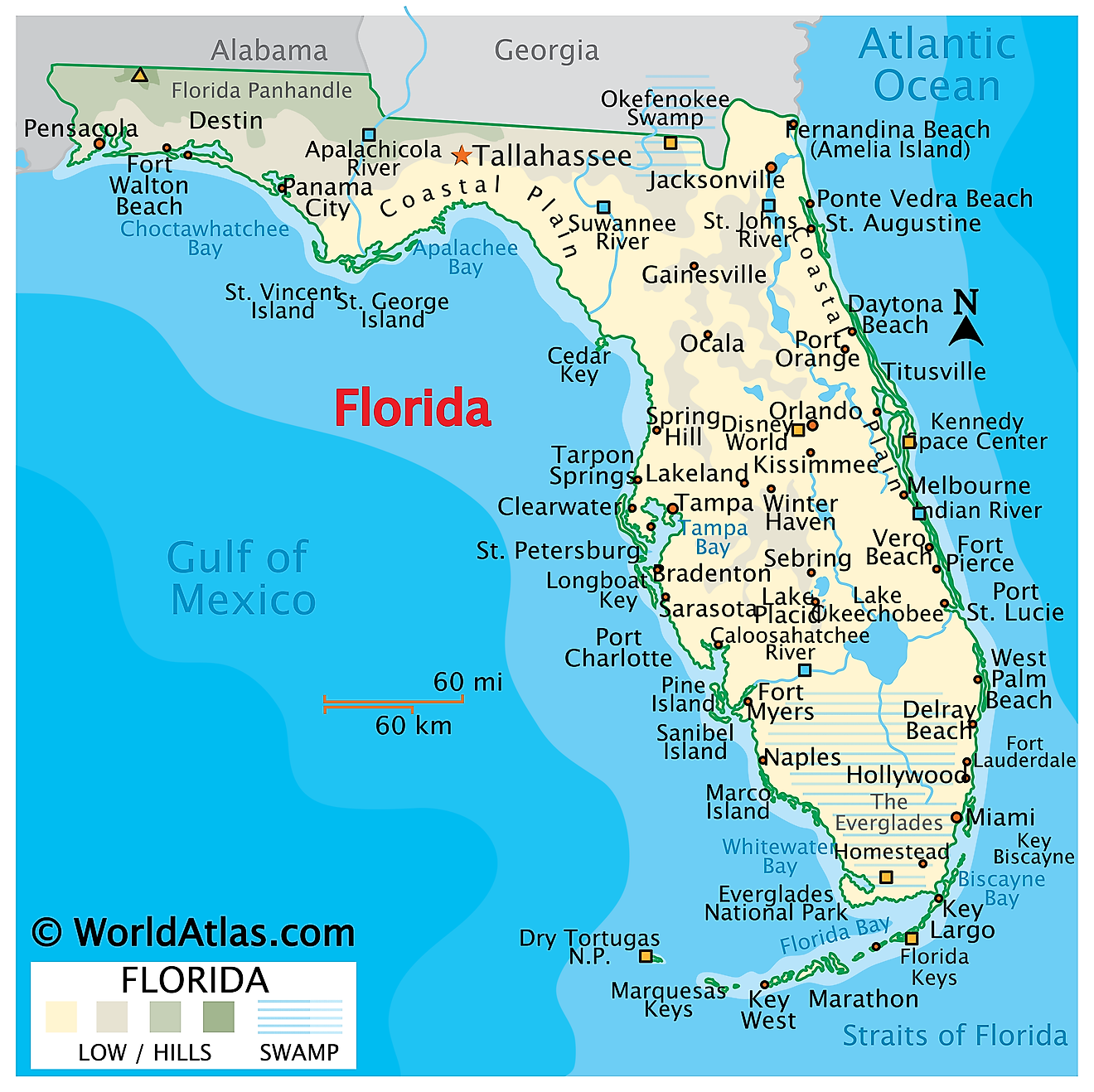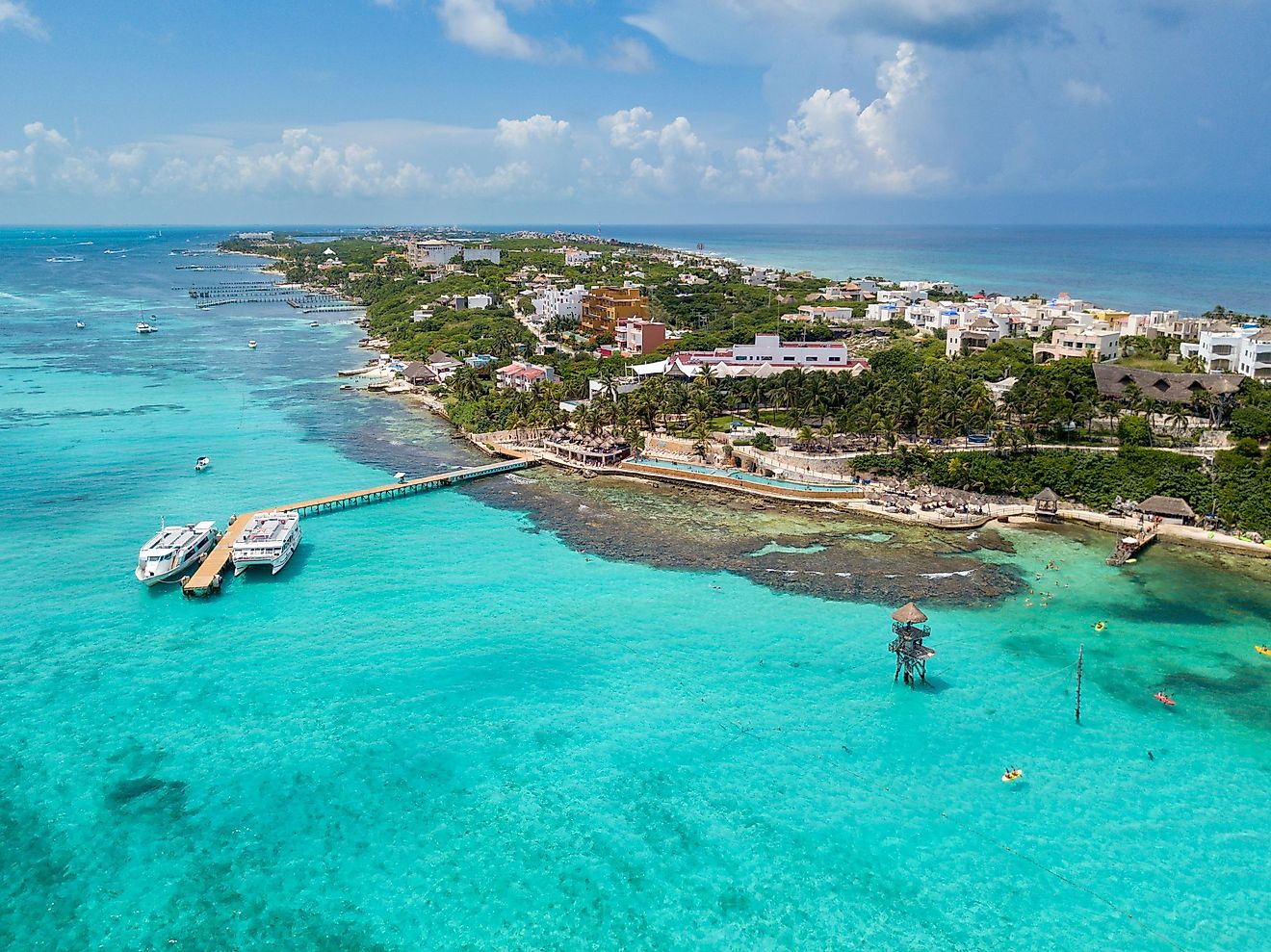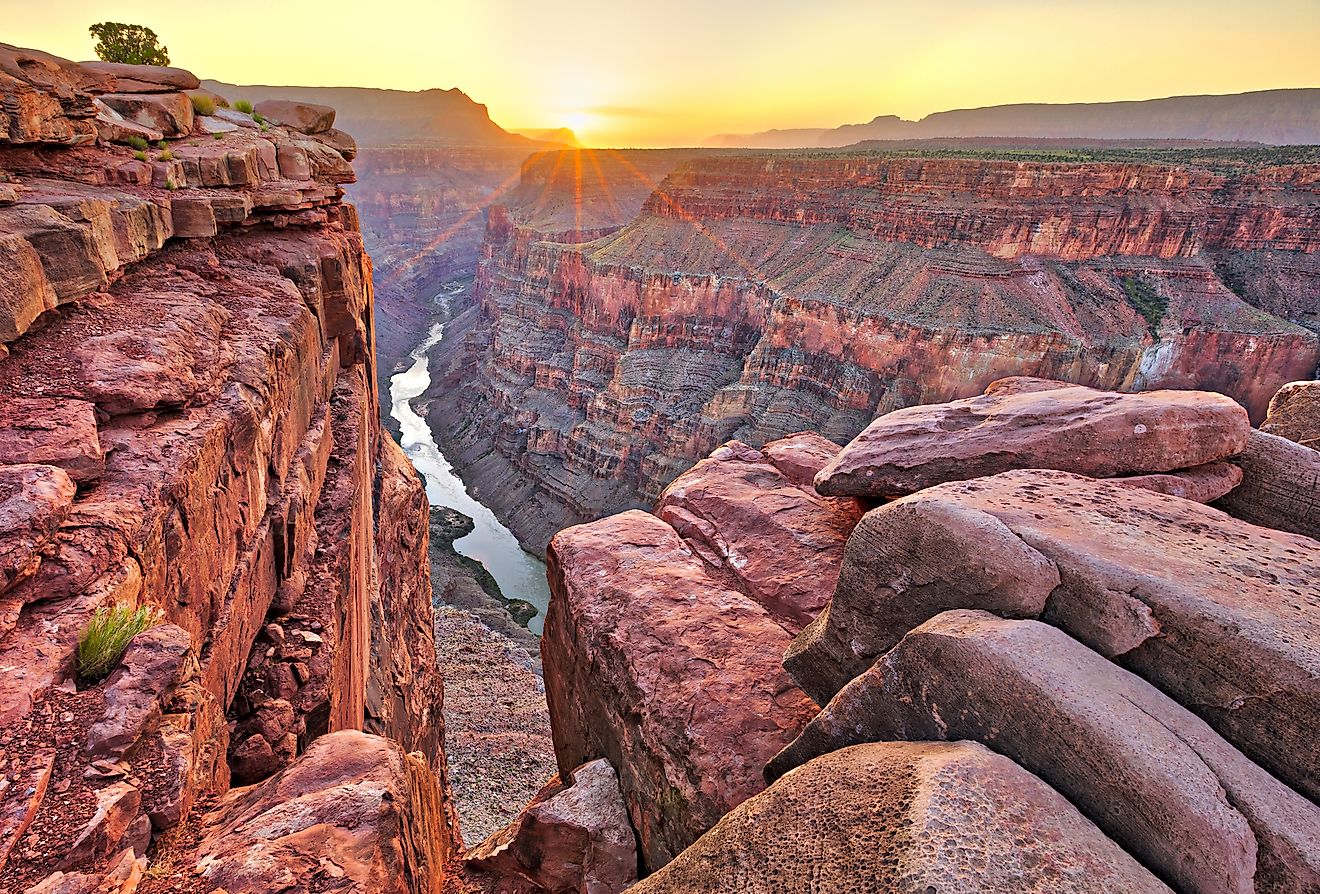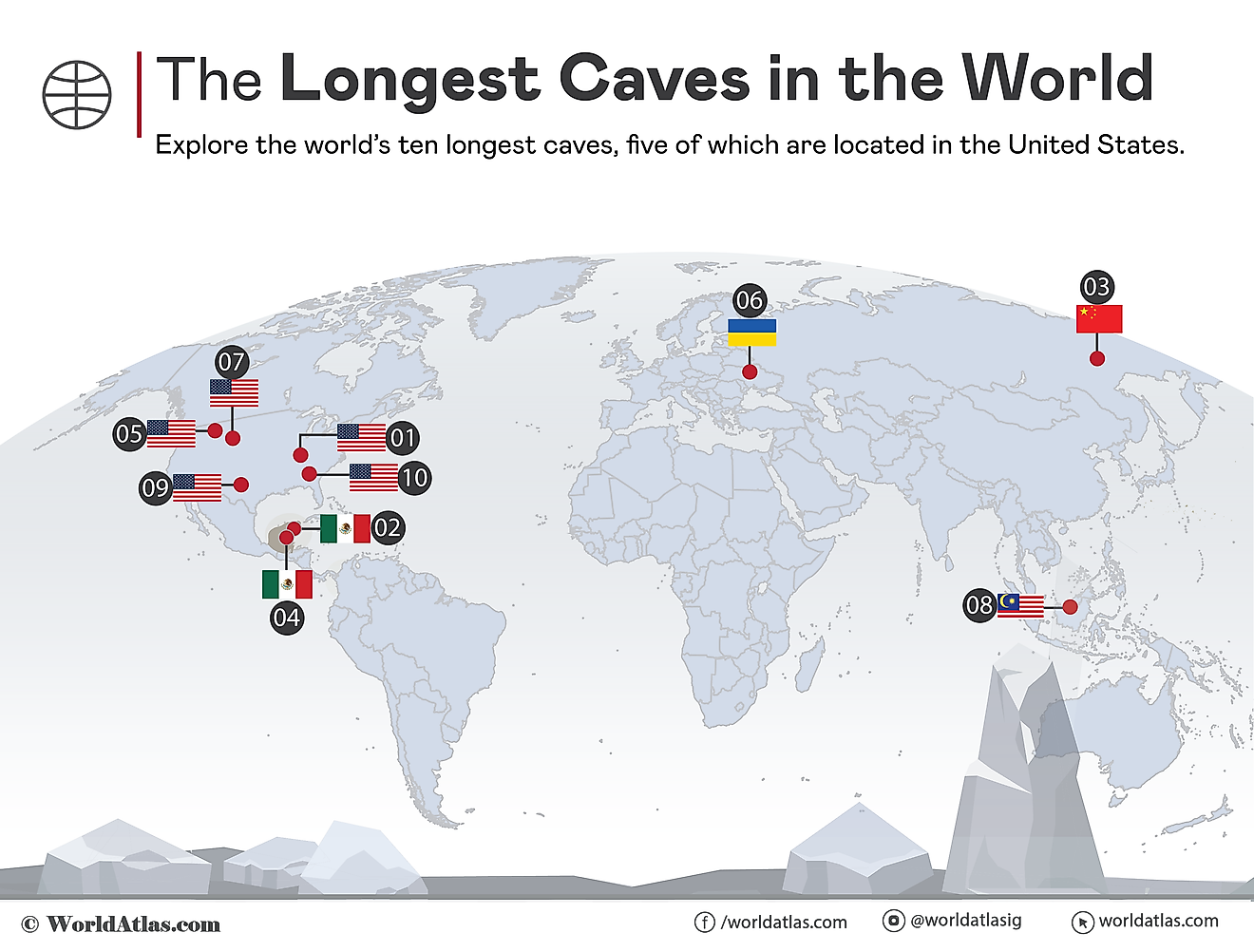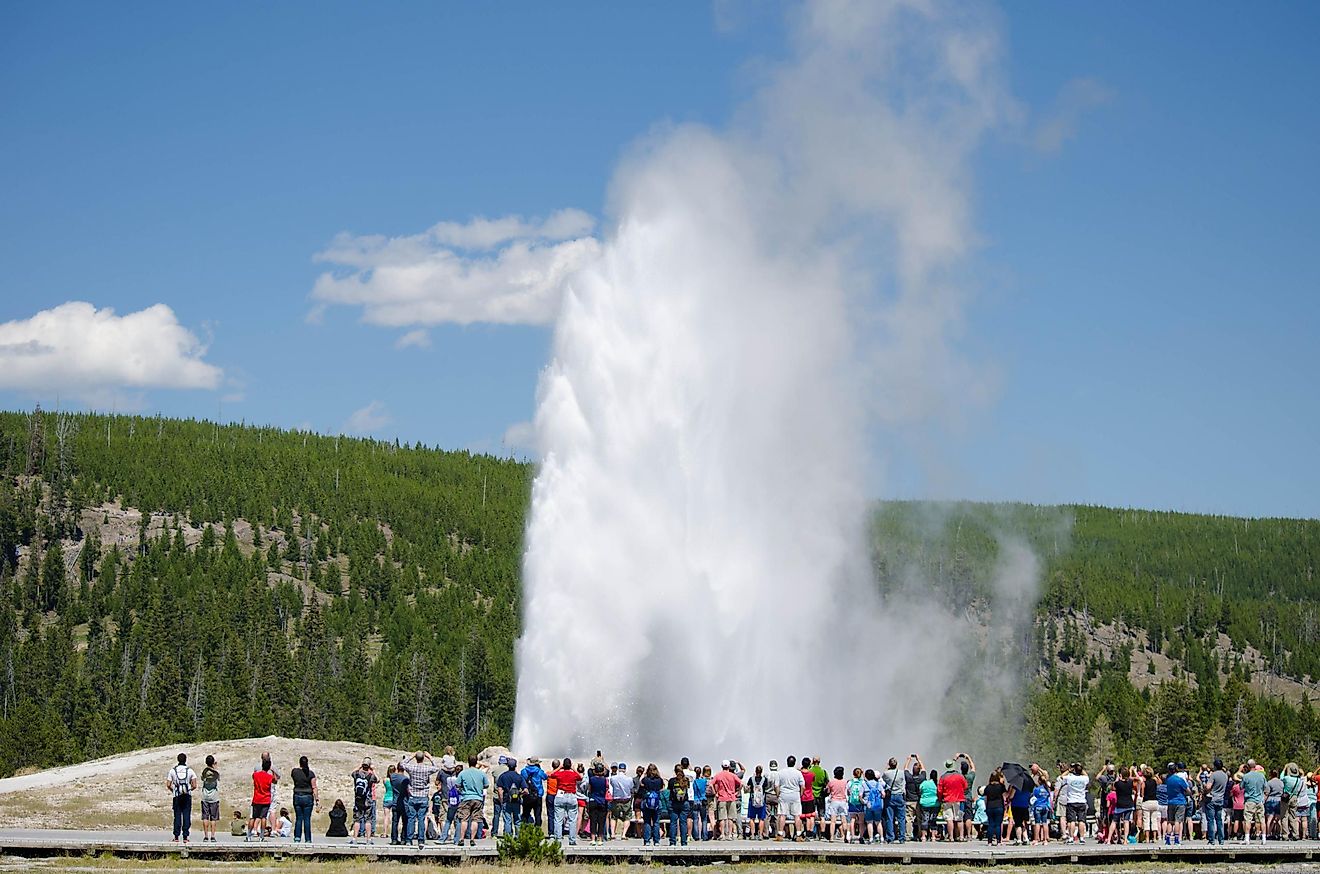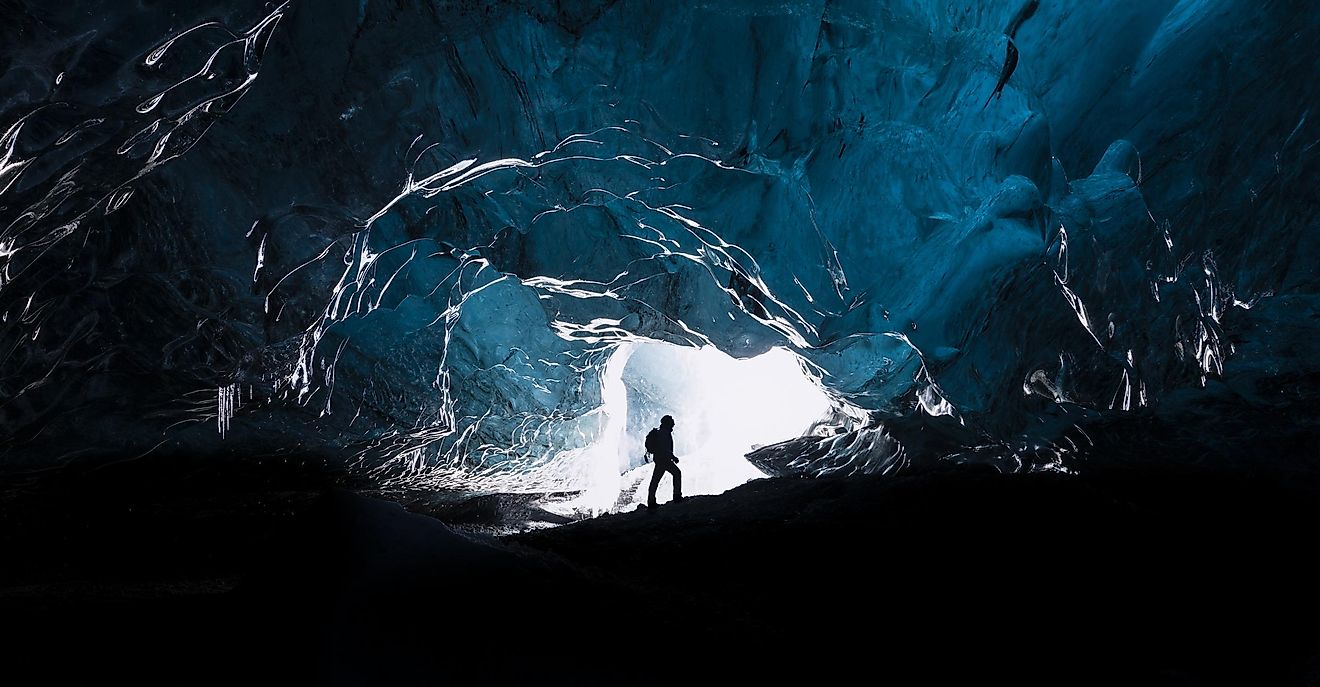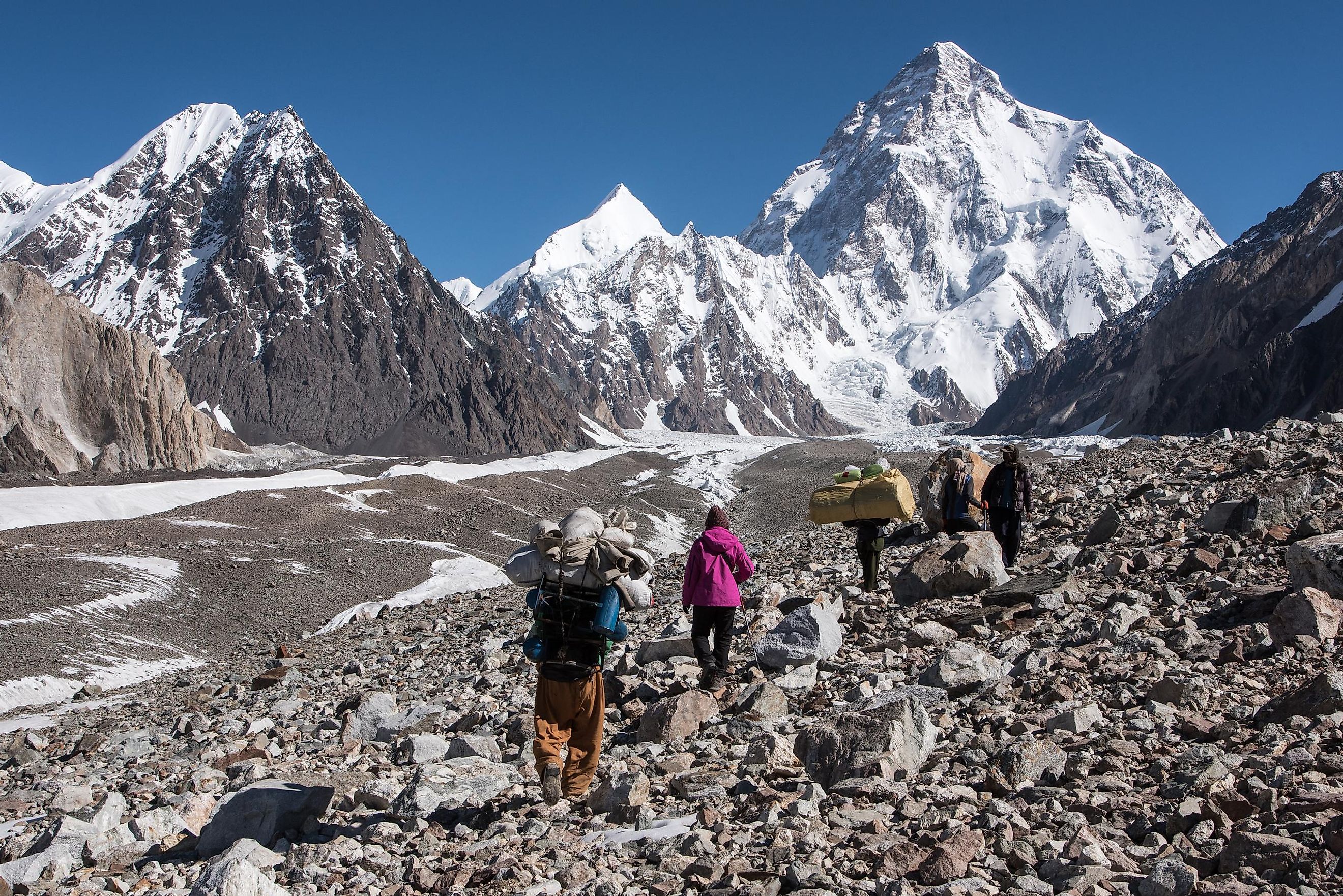
10 Highest Mountains In The World
The tops of cloud-piercing peaks were once thought to be the domain of deities and demons. Now, they act as outlets for the most adventurous and ambitious of us. Perhaps it is our hunter-gatherer lineage that drives us to the best possible survey spot, or maybe our inner child is still bent on claiming "King of the Castle" status, but one thing is for sure: something in our bones resonates at the mere sight of the world's highest mountains. To fill a list of the top ten, we must journey to the domineering ranges of the Himalaya and Karakoram.
Top 10 Highest Mountains in the World
| Rank | Mountain | Height (Above Sea Level) |
|---|---|---|
| 1 | Mount Everest | 8,849 Meters |
| 2 | K2 | 8,611 Meters |
| 3 | Kangchenjunga | 8,586 Meters |
| 4 | Lhotse | 8,516 Meters |
| 5 | Makalu | 8,485 Meters |
| 6 | Cho Oyu | 8,188 Meters |
| 7 | Dhaulagiri I | 8,167 Meters |
| 8 | Manaslu | 8,163 Meters |
| 9 | Nanga Parbat | 8,126 Meters |
| 10 | Annapurna I | 8,091 Meters |
Also check out the Top 30 Highest Mountains in the World.
Highest vs Tallest Mountains
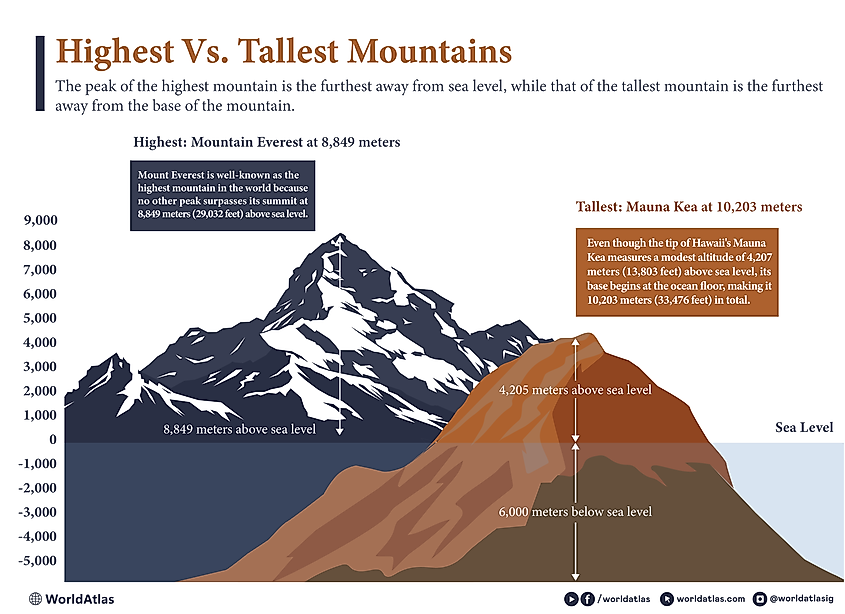
Before we begin, let us first clarify our terms. When speaking of the highest mountains, we are referring to the maximum altitude of the rocky prominences in question. For instance (spoiler alert), Mount Everest is well-known as the highest mountain in the world because no other peak surpasses its summit at 8,849 meters (29,032 feet) above sea level. On the other hand, the world's tallest mountains are defined by their differential between base and summit. For example, even though the tip of Hawaii's Mauna Kea measures a modest altitude of 4,207 meters (13,803 feet) above sea level, its base begins at the ocean floor, making it 10,203 meters (33,476 feet) in total. Tall mountains are therefore a bit of an intellectual exercise, whereas mountains with the highest altitude pack the greatest visceral punch. The latter is what this article seeks to explore.
Mount Everest: 8,849 Meters (29,032 Feet)
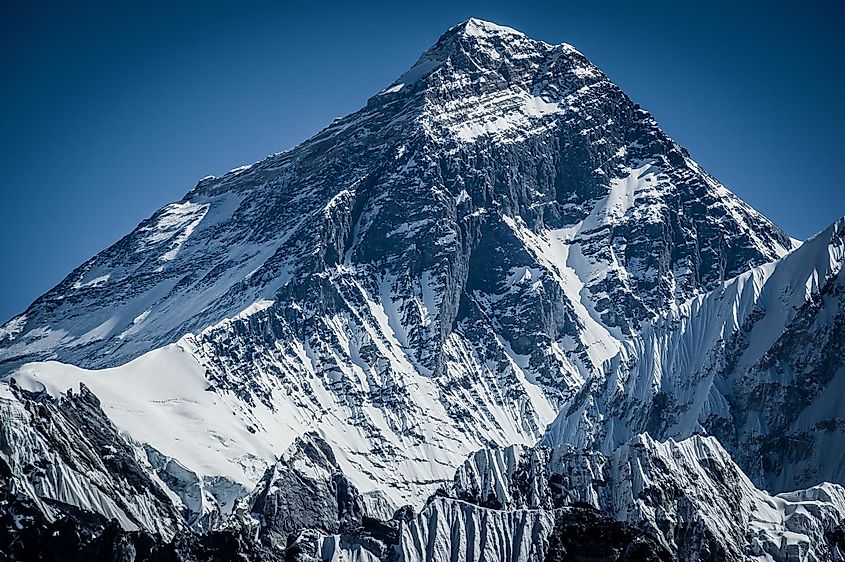
The mother of all mountains, the highest point on planet Earth; Mount Everest has captured the attention of the West ever since it was formally classified in 1856 as part of the Great Trigonometrical Survey. Part of the famed Himalaya mountain range, on the border between Nepal and Tibet, Mount Everest actually goes by several names. Yes, it is most commonly referred to as the billboarded title, which was selected in honor of British surveyor, Sir George Everest. But the Tibetans know it as Chomolungma, meaning "Mother Goddess of the World," while the Nepalese refer to it as Sagarmatha (which conveys a similar sentiment). No matter what we choose to call it, the world's highest mountain is not only the undisputed champion, but thanks to thrusting tectonic forces, its altitude continues to increase by approximately two inches each year. So the hundreds, or even thousands of people who summit Everest this spring, will actually have an additional bragging right over Tenzing Norgay and Edmund Hillary, who claimed the summit, aka "the third pole," in 1953 (or was it Mallory and Irving in 1924?).
K2: 8,611 Meters (28,251 Feet)
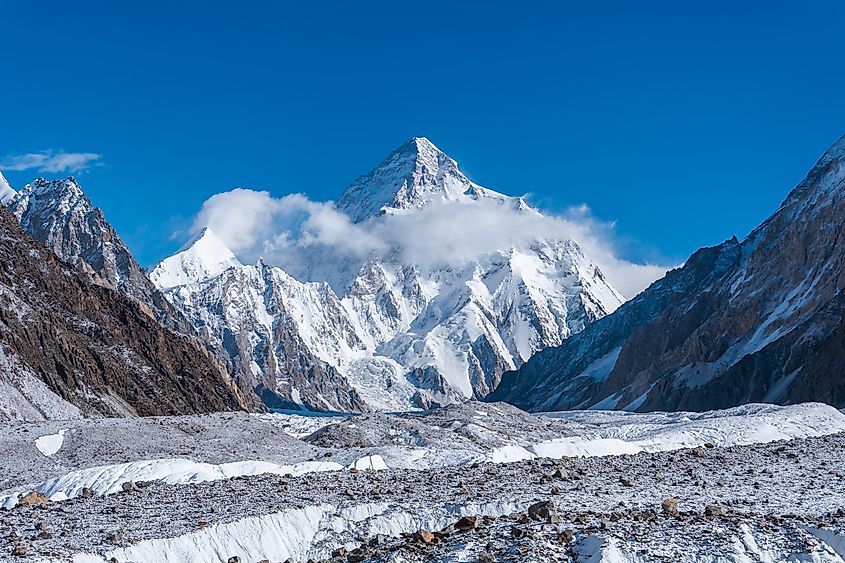
Dubbed the "Savage Mountain" due to the dangers and difficulties that plague climbers, K2 is the world's second-highest peak, and also one of its deadliest (posting a death-to-summit ratio of about 23%). This steep, prominent peak was also formally surveyed in 1856, and was given its current designation because it was the second peak of the Karakoram (a major mountain range along the border of Pakistan, China, and India) to be cataloged. While a bit unimaginative at the time, the very mention of the curt title has since come to strike fear and intrigue into the elite climbing community and fans of high-altitude alpinism. K2 witnessed several disastrous expeditions before (and many since) it was finally summited in 1954 by Ardito Desio and his team of Italian climbers/local porters.
Kangchenjunga: 8,586 Meters (28,169 Feet)
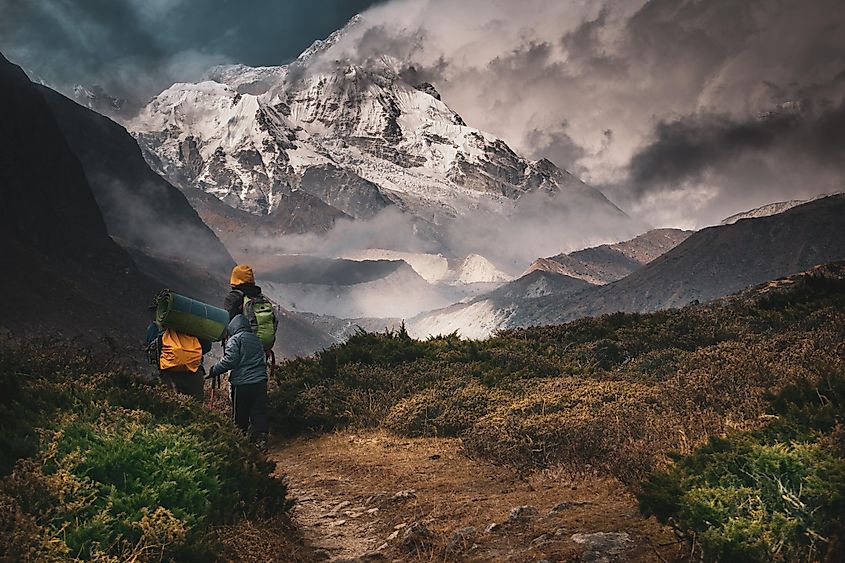
The world's third-highest mountain (and the last to eclipse 28,000 feet) takes us back to the Himalaya. Kangchenjunga, which was first climbed in 1955 by British climbers Joe Brown and George Band, sits on the border of eastern Nepal and the extreme northeast of India (i.e. Sikkim). Significant to both the Hindu and Buddhists cultures of the region, Kanghenjunga (which means "Five Treasures of Snow") is the focal point of the titular conservation area in Nepal, and the UNESCO World Heritage Site, Khangchendzonga National Park (one of several alternate spellings for this mountain), in India. With the notable exception of the first two highest peaks, the Royal Geographical Society attempted to utilize existing indigenous names for the mountains they surveyed. Notice that this is the norm for the remainder of our list.
Lhotse: 8,516 Meters (27,940 Feet)
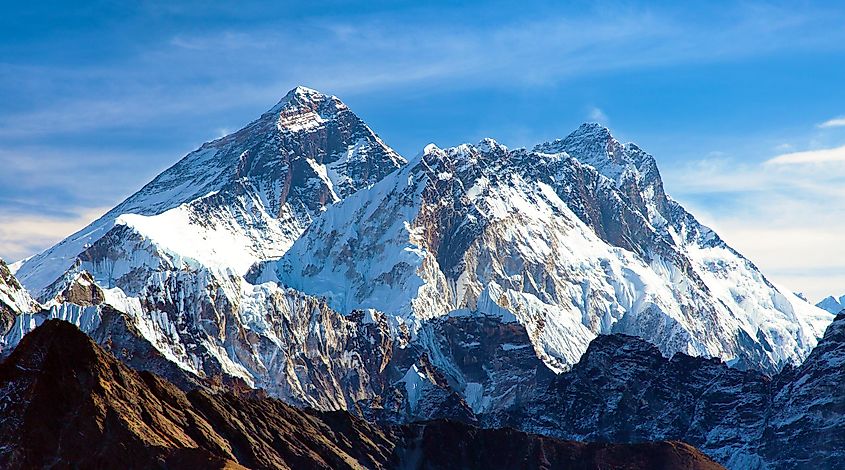
Lhotse shares the same massif as Everest, right on the border of northeastern Nepal (within Sagarmatha National Park) and the southern extent of the Tibetan Autonomous Region of China. The two peaks are simply separated by a section of this Himalayan hulk known as the South Col. Lhotse, which is a Tibetan term that translates as "South Peak," is therefore a popular addition to Everest expeditions for exceptional climbers looking to summit all 14 "eight thousanders" (i.e. the peaks that rise more than 8,000 meters above sea level), or for well-trained adventurers who want a slightly easier and less crowded experience than Everest currently offers. To spice things up even further, Lhotse actually boasts several distinct summits, with Lhotse Main being the highest. The world's fourth-highest mountain was first climbed by a Swiss team in 1956.
Makalu: 8,485 Meters (27,765 Feet)
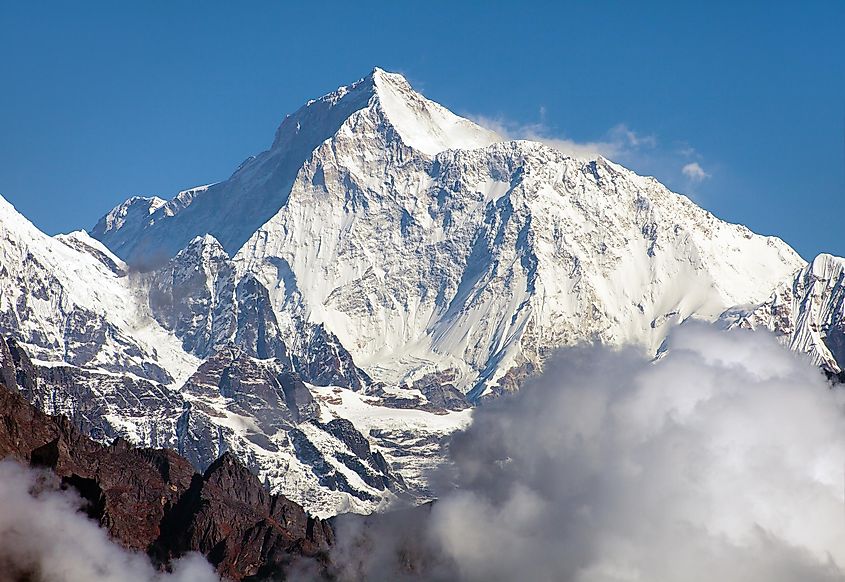
Just a short traverse east of Everest (23 kilometers/14 miles as the crow flies), still in the area known as the Khumbu region, Makalu rounds out the top five highest mountains in jaw-dropping style. The body of this Himalayan peak has been naturally sculpted into a four-sided pyramid, and unlike Everest/Lhotse, it stands alone. Makalu, which is the centerpiece of the Makalu-Barun National Park and Conservation Area, takes its name from the Sanskrit word, Maha Kala, which translates as "Big Black," and also refers to the Hindu god, Shiva. Though this peak was first summited around the same time as the others we've thus-far discussed (i.e. in 1955 by a team of French climbers), Makalu is considered to be one of the most challenging 8,000ers because of its isolated position and precipitous figure.
Cho Oyu: 8,188 Meters (26,864 Feet)
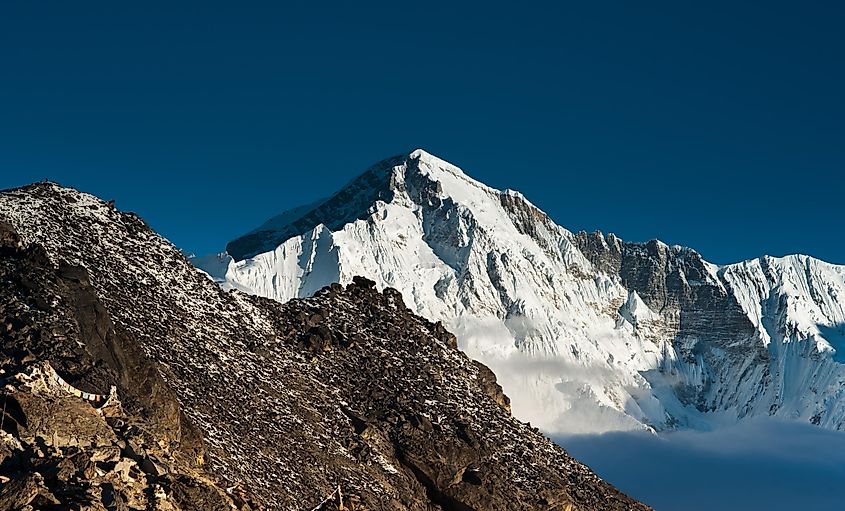
Heading in the other direction from Everest basecamp (i.e. about 20 kilometers/12 miles west), again on the same stretch of the Nepalese/Tibetan border, Cho Oyu impresses in terms of height and aesthetic. The planet's sixth-highest mountain bears a Tibetan name that translates as "Turquoise Goddess." Its snow and ice-shrouded mass seems to reflect, or at least accent the bright blue skies above and foggy green-blue alpine lakes below. Cho Oyu is considered to be the least-technical of the 8,000ers. It was first submitted by members of an Austrian team (and their accompanying Sherpa) in 1954. Nowadays, Cho Oyu maintains a success rate of around 45%. But unlike many of the peaks on this list, the prime climbing window is in the fall, rather than the spring.
Dhaulagiri I: 8,167 Meters (26,795 Feet)
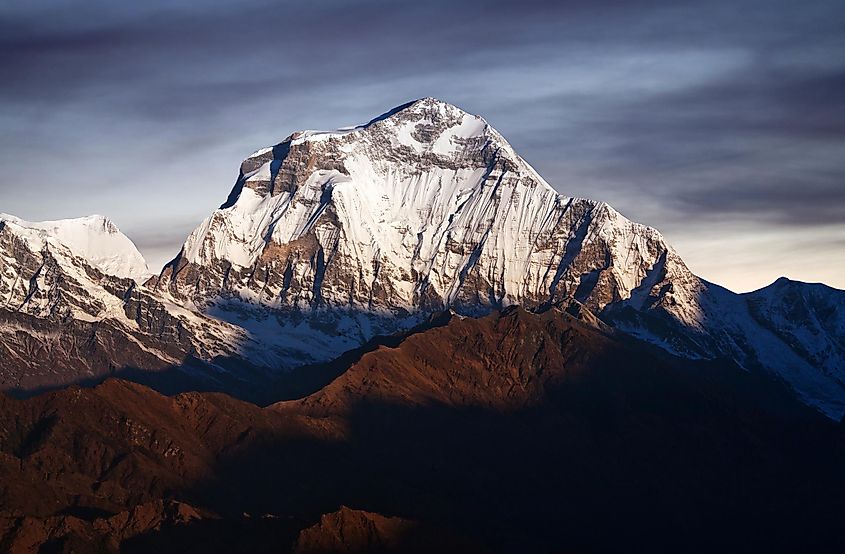
Stepping back from the Tibetan border, the entirety of Dhaulagiri I stands in Nepal). The world's seventh highest mountain is the most prominent pyramid along the eponymous, 120-kilometer/75-mile-long Himalayan massif that cuts through the Myagdi district. The name Dhaulagiri stems from the Sanskrit words, Dhawala and Giri, which mean "beautiful/dazzling/white" and "mountain" respectively, and so the nickname, "White Mountain," is commonly deployed. Because of its high-degree of technicality (i.e. advanced climbing), Dhaulagiri I was not conquered until 1960, this time by a Swiss-Austrian team and multiple Nepalese Sherpas. This mountain and Annapurna I (coming up in a few more entries) are split by the Kaligandaki River, forming the deepest gorge in the world: Kali Gandaki.
Manaslu: 8,163 Meters (26,781 Feet)
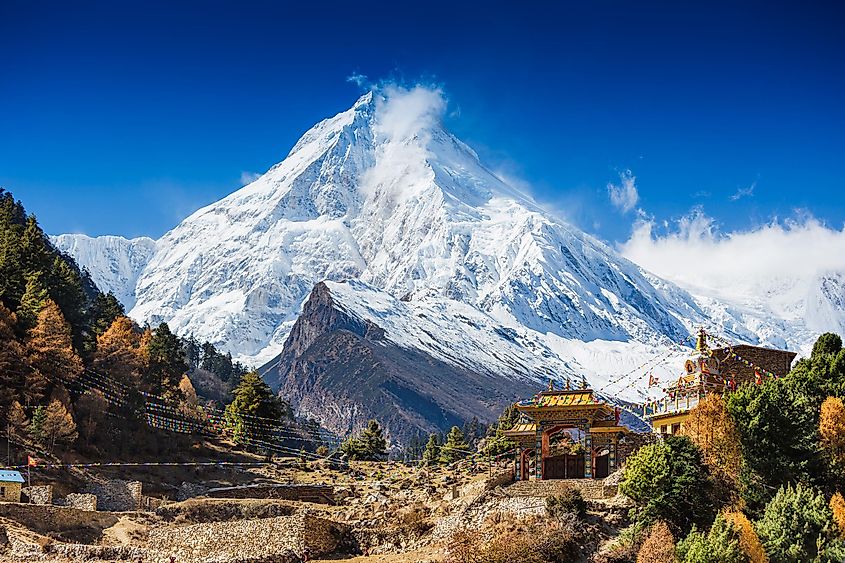
Also situated solely within the Himalaya of central Nepal is Manaslu, aka Kutang - the eighth member of the 8,000-meter peaks. The "Mountain of Spirit'' (as translated from the Sanskrit word, Manasa) is part of the Gurkha Massif, and makes its presence well-known with its striking twin summits. Successful expeditions on Manaslu tend to be few and far between. Japanese teams were responsible for the first two ascents, but those were 15 years apart (1956 and 1971). The first American did not top out until 1997, and since 2003 the summit-to-death ratio was an abysmal 240 to 52, making it the fourth deadliest 8,000er after K2 and our two remaining entries.
Nanga Parbat: 8,126 Meters
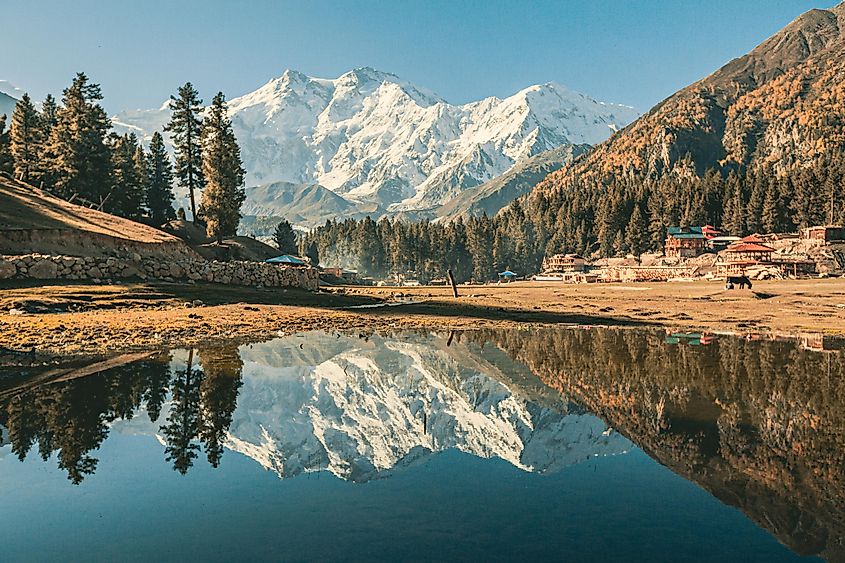
The ninth-highest mountain takes us back up to northern Pakistan. Though relatively close to K2, Nanga Parbat ("Naked Mountain"), aka Diamer ("King of the Mountains''), is part of the westernmost Himalaya range, rather than the Karakorum - a separate system to the north. Widely considered to be the second-hardest 8,000 after K2, Nanga Parbat has long been a place for expert climbers to cement their legacy. For instance, even though it was led by a German-Austrian team, the very first ascent was ultimately a head-turning solo mission performed by Hermann Buhl (without supplementary oxygen, I might add). Throughout the ages only five summits have been achieved via the imposing south face, which rises 4,000 meters above base camp, making it the largest of any mountain, anywhere.
Annapurna I: 8,091 Meters
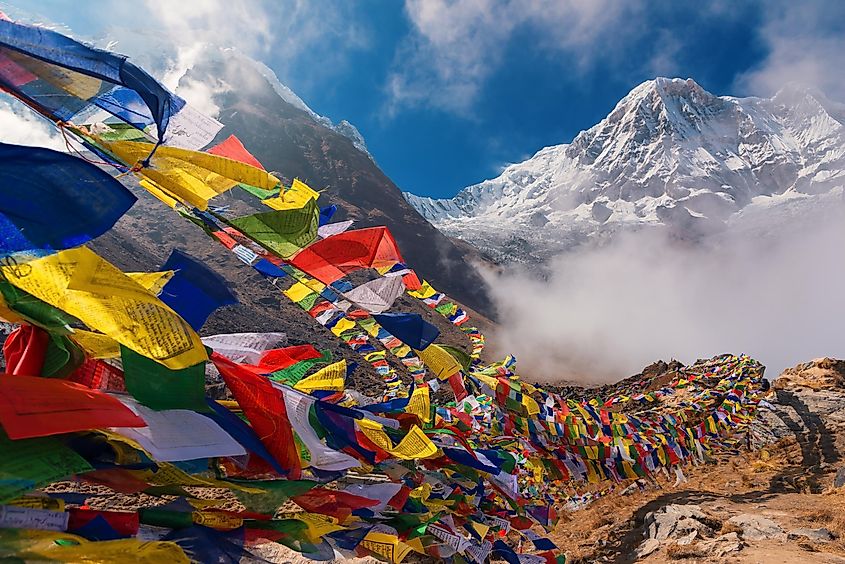
Though bottom of this particular list, Annapurna I claims another, far less inspiring crown: the world's deadliest mountain. This eastern neighbor of Dhaulagiri I claims the lives of 32 people for every 100 that reach the summit. In the fall of 1999, that morbid percentage surpassed 50% and in 2014, 40 people perished in a single catastrophic snowstorm. Along with the extreme altitude (8,000 meters is in the notorious Death Zone), Annapurna I throws sheer sections of rock and ice, daunting crevasses, unpredictable avalanches, and limited options for emergency aid at its prospective conquerors. With that said, this was actually the first 8,000er to be summited (which was done by Maurice Herzog and Louis Lachenal in 1950). However, this feat was not repeated until 1970.
Final Thoughts
The world's highest mountains (as measured by their maximum altitude above sea level) are all formidable geological formations. Mythologies and spiritual practices have formed around them, while mountaineering legends have been forged atop them. If you're curious to keep exploring the rest of the 8,000ers, or to scratch the surface of the Earth's 7,000ers, check out the top 30 list below.
Top 30 Highest Mountains in the World
| Mountain | Height (Meters Above Sea Level) | |
|---|---|---|
| 1 | Mount Everest | 8,849 |
| 2 | K2 | 8,611 |
| 3 | Kangchenjunga | 8,586 |
| 4 | Lhotse | 8,516 |
| 5 | Makalu | 8,485 |
| 6 | Cho Oyu | 8,188 |
| 7 | Dhaulagiri I | 8,167 |
| 8 | Manaslu | 8,163 |
| 9 | Nanga Parbat | 8,126 |
| 10 | Annapurna I | 8,091 |
| 11 | Gasherbrum I | 8,080 |
| 12 | Broad Peak | 8,051 |
| 13 | Gasherbrum II | 8,035 |
| 14 | Shishapangma | 8,027 |
| 15 | Gyachung Kang | 7,952 |
| 16 | Annapurna II | 7,937 |
| 17 | Gasherbrum IV | 7,932 |
| 18 | Himalchuli | 7,893 |
| 19 | Distaghil Sar | 7,884 |
| 20 | Ngadi Chuli | 7,871 |
| 21 | Khunyang Chhish | 7,823 |
| 22 | Masherbrum | 7,821 |
| 23 | Nanda Devi | 7,816 |
| 24 | Chomo Lonzo | 7,804 |
| 25 | Batura Sar | 7,795 |
| 26 | Rakaposhi | 7,788 |
| 27 | Namcha Barwa | 7,782 |
| 28 | Kanjut Sar | 7,760 |
| 29 | Kamet | 7,756 |
| 30 | Dhaulagiri II | 7,751 |
